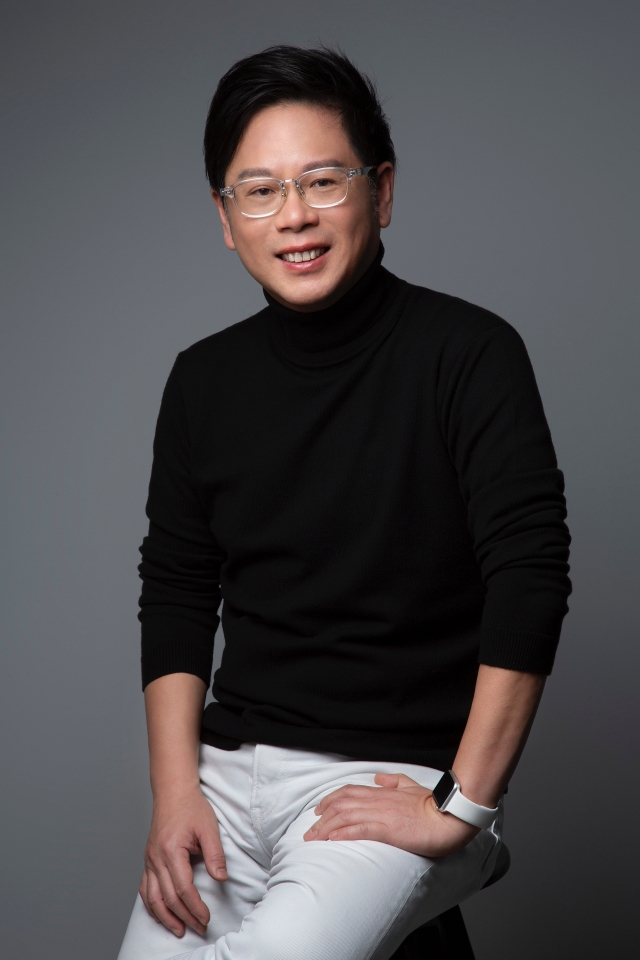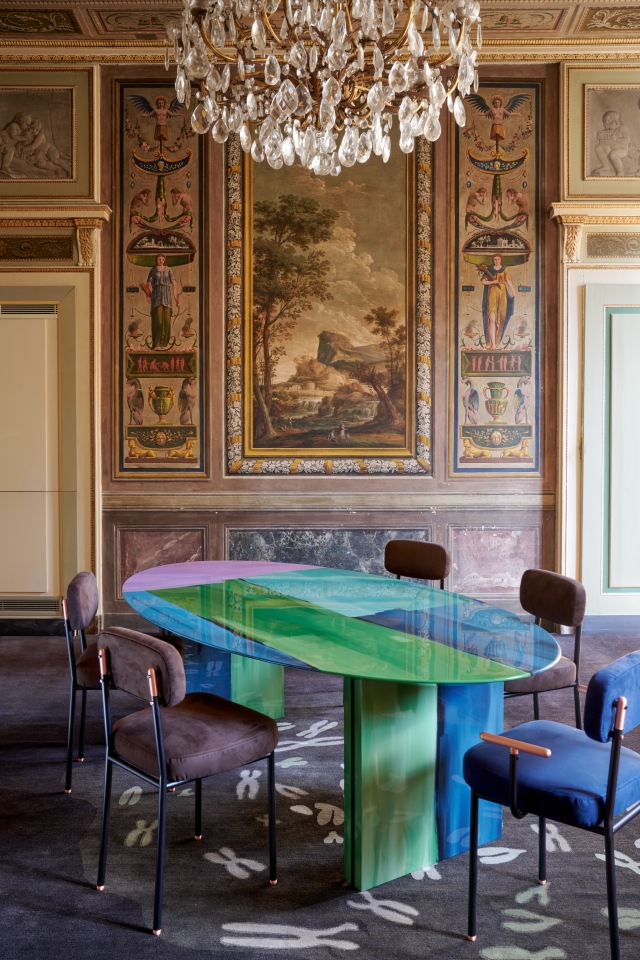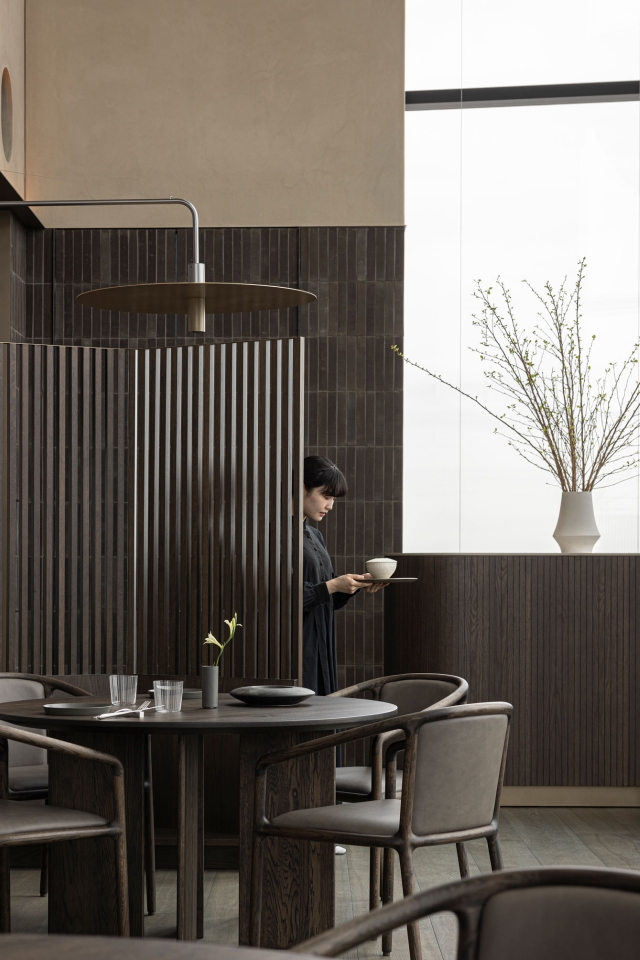Christine Jacobs's work spans furniture design, fine art, photography, and sculpture - entirely rejecting the notion of being confined to one field or approach. A series of successes have paved her way to a solo show with South Africa's pre-eminent gallery, Southern Guild - a Cape Town-based gallery specialising in functional and fine art by artists from Africa and its diaspora founded in 2008 by Trevyn and Julian McGowan. The gallery pioneered collectable design on the continent before broadening its remit to include fine art. The gallery is known for nurturing its artists, including rising stars like Zizipho Poswa [ceramicist extraordinaire], and partners with international galleries and institutions, regularly exhibiting at international fairs. Its artists' work is in the permanent collections of the Metropolitan Museum of Art, LACMA and the Philadelphia Museum of Art. The gallery is expanding into the US, opening an outpost in the Melrose Hill section of Hollywood in 2024 designed by Evan Raabe Architecture - the Studio behind Hauser & Wirth's LA branch and Christie's Beverly Hills are transforming a disused laundromat at 474 N Western Avenue into a 5,000-square-foot gallery.
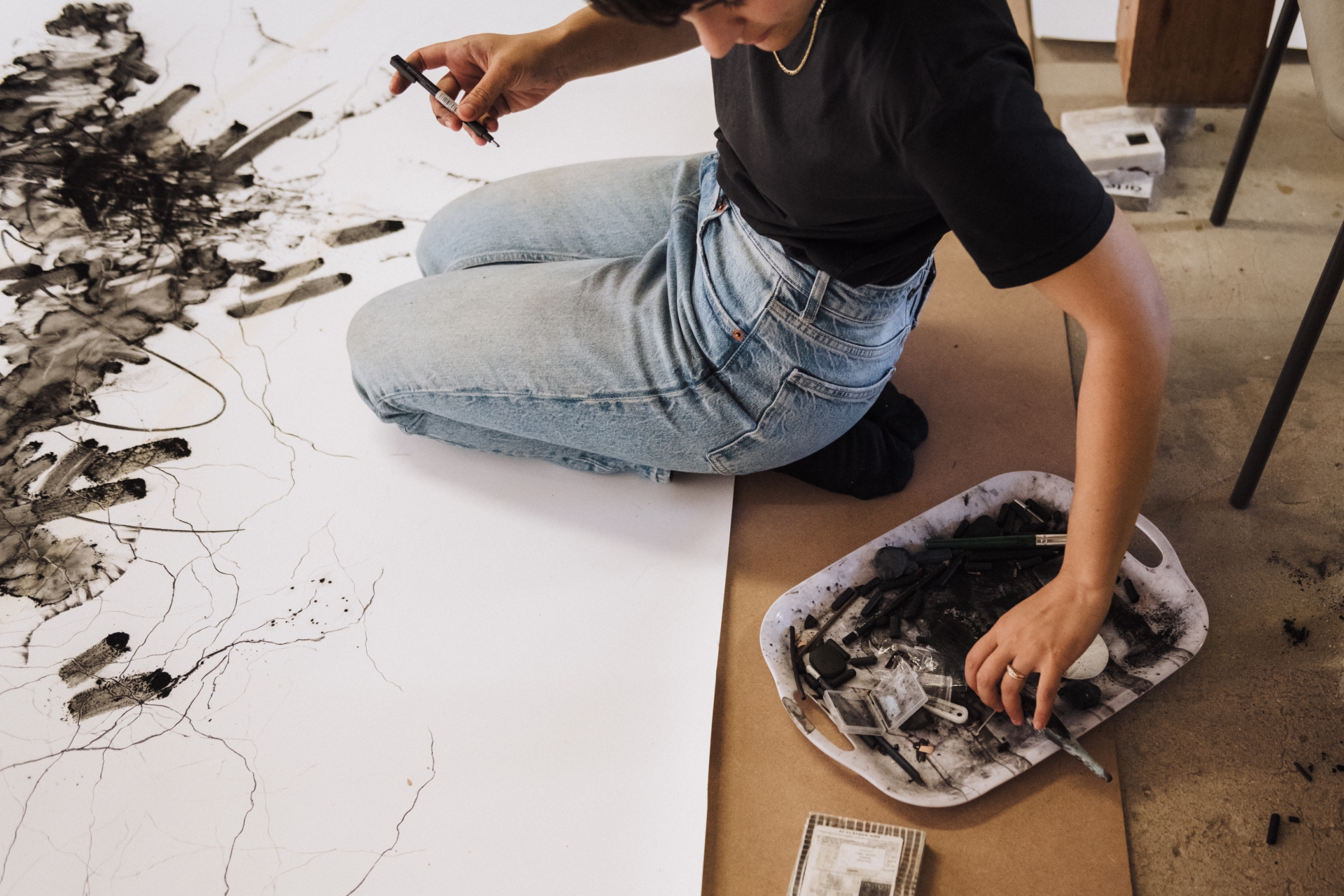
Jacobs's upcoming solo exhibition, with Southern Guild, entitled "Enfold", features the artist's most substantial felt sculptures and charcoal drawings to date. This body of work arises from the artist's ongoing richly intuitive interaction with the landscape surrounding the Merino sheep farm belonging to her family in South Africa's Free State province. Jacobs undulating sculptures and gestural abstract cartographic drawings foreground the symbiotic interchange between the land and its inhabitants, recording the physical and non-physical traces of change and exchange between them.
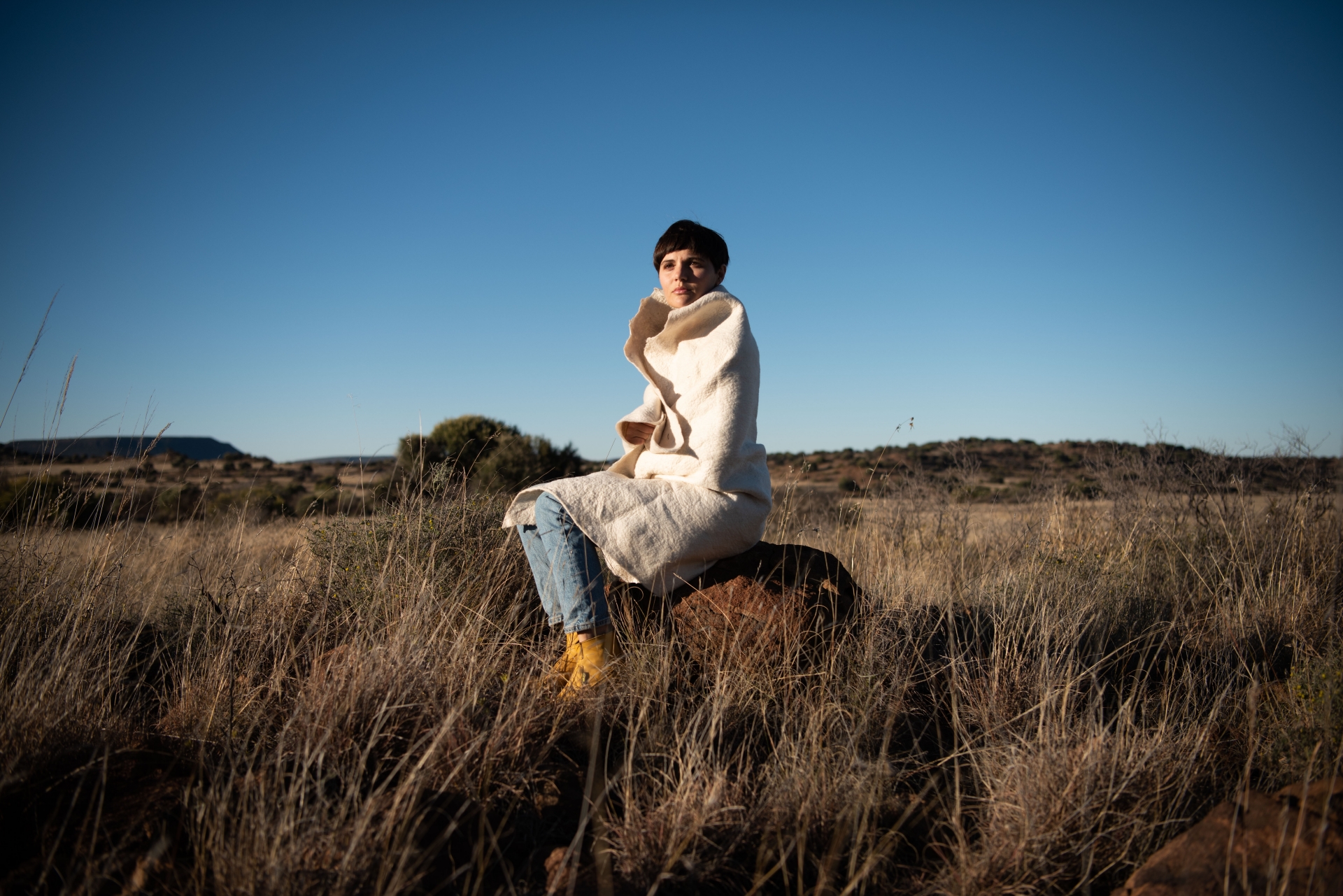
How would you describe your craft? Are you a designer, a furniture designer, a fine artist, a photographer or a sculptor?
If pressed, I would describe myself as a functional artist.
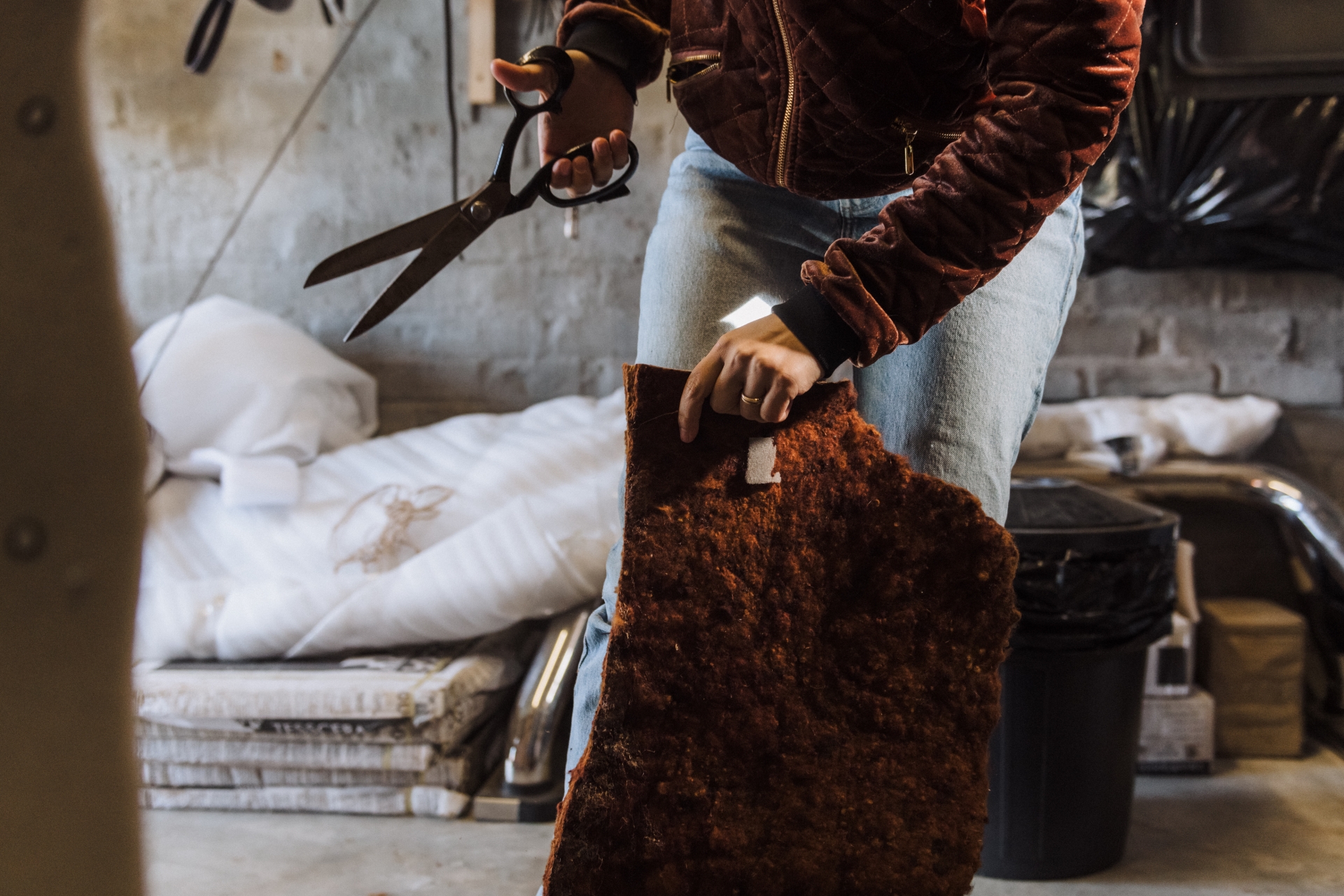
What best describes your distinct style?
I would say it's nostalgically minimal. My furniture has Scandinavian, Art Deco and Japanese references. But minimalism is definitely at play - the curves and the steel lean on nostalgia and my heritage at the farm.
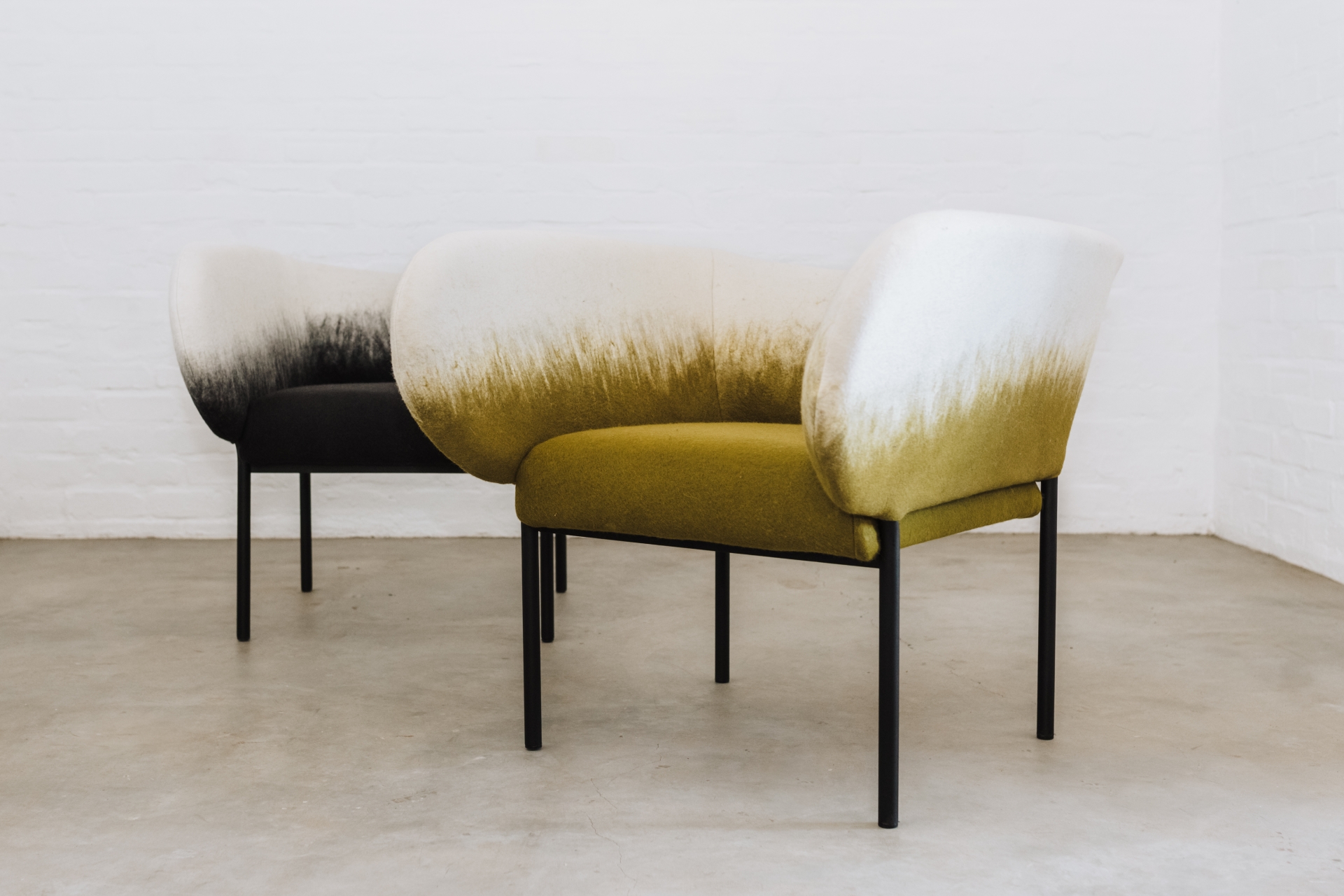
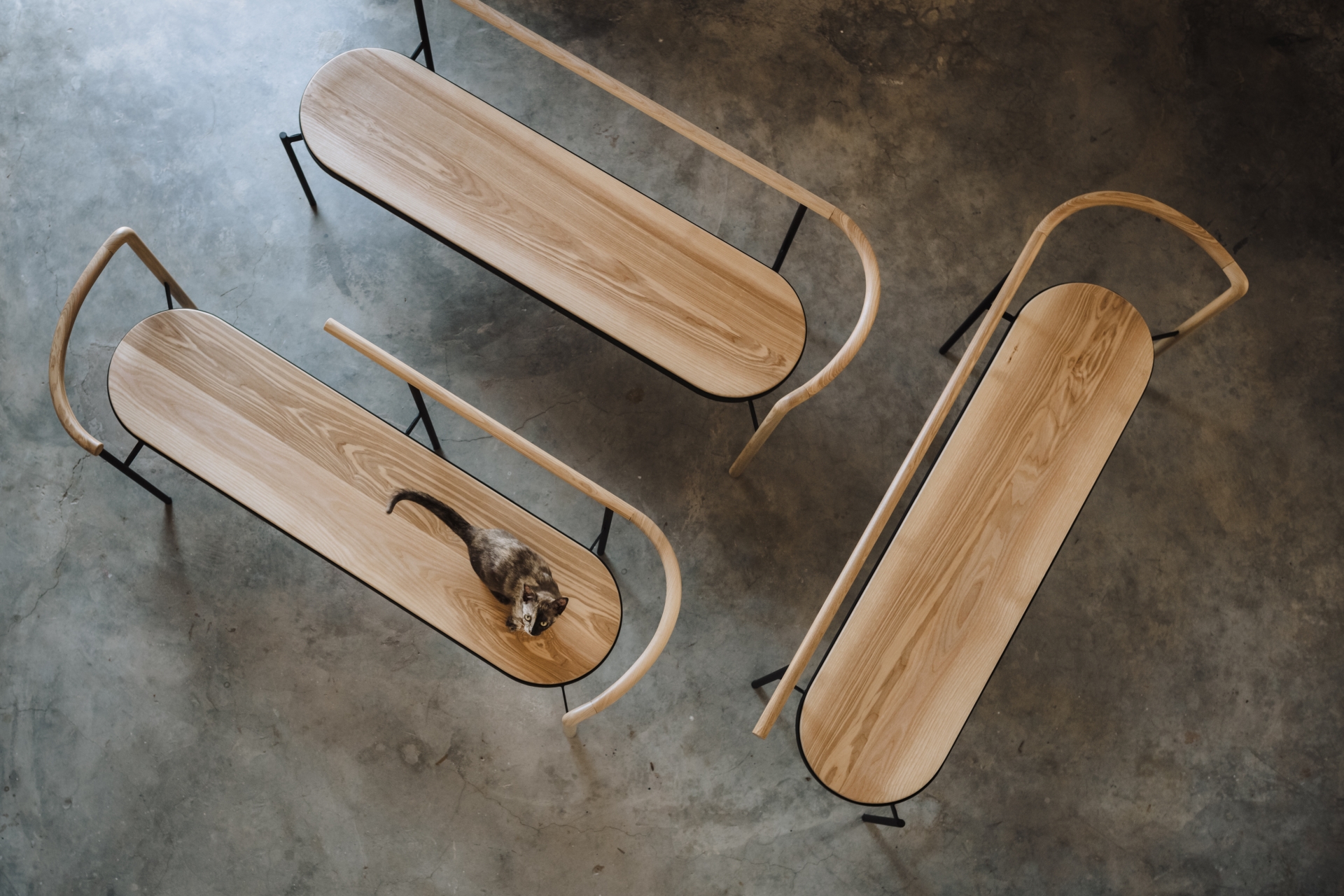
What inspires you to create?
My artworks speak closely to one another as both talk about traces and referencing the marks we leave behind on the landscape that we take away with us. My works pay homage to the landscape I grew up in and my family heritage at that site. My drawings offer a glimpse into the world I imagined the place to be. The marks reference a broad spectrum from contours to vegetation. It also uses a gestural mark playing on the tensions viewed within this landscape. The organic vs. the constructed. And how they coexist in this world. The group Show Lines of Lineage included some of my drawings where the marks show the traces left on the landscape. Some seen and some unseen. Like in a drawing, our imprint on a landscape never leaves.
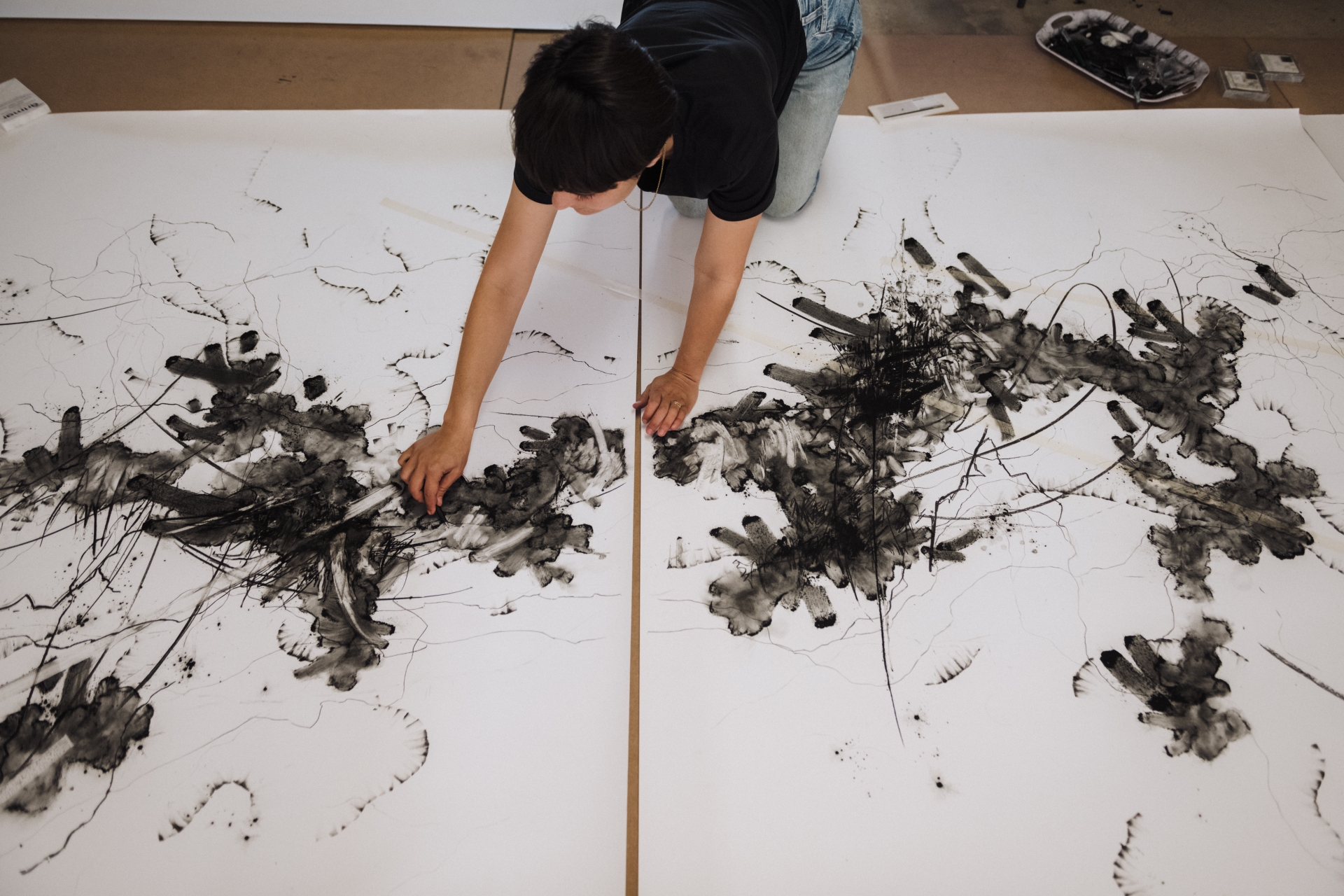
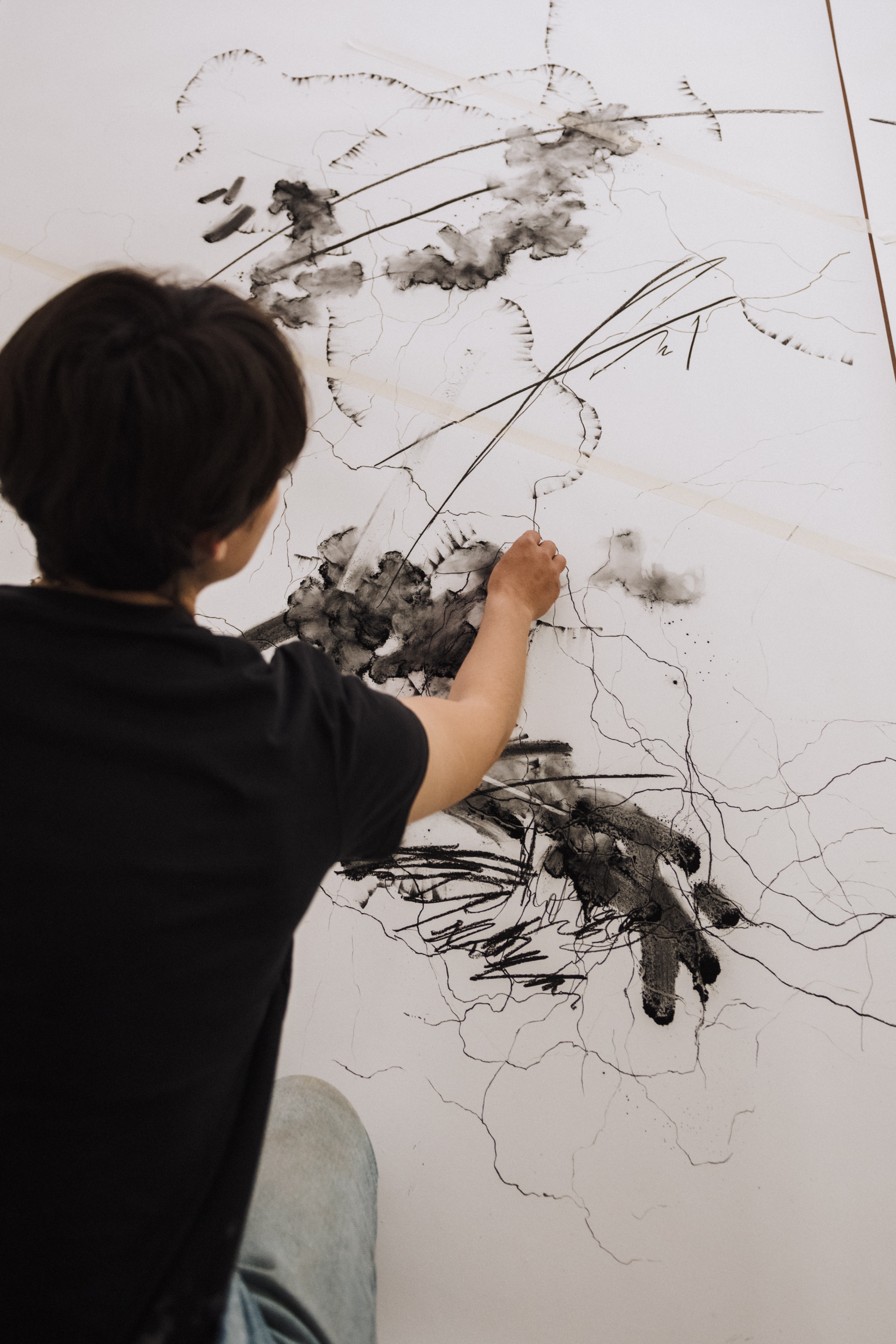
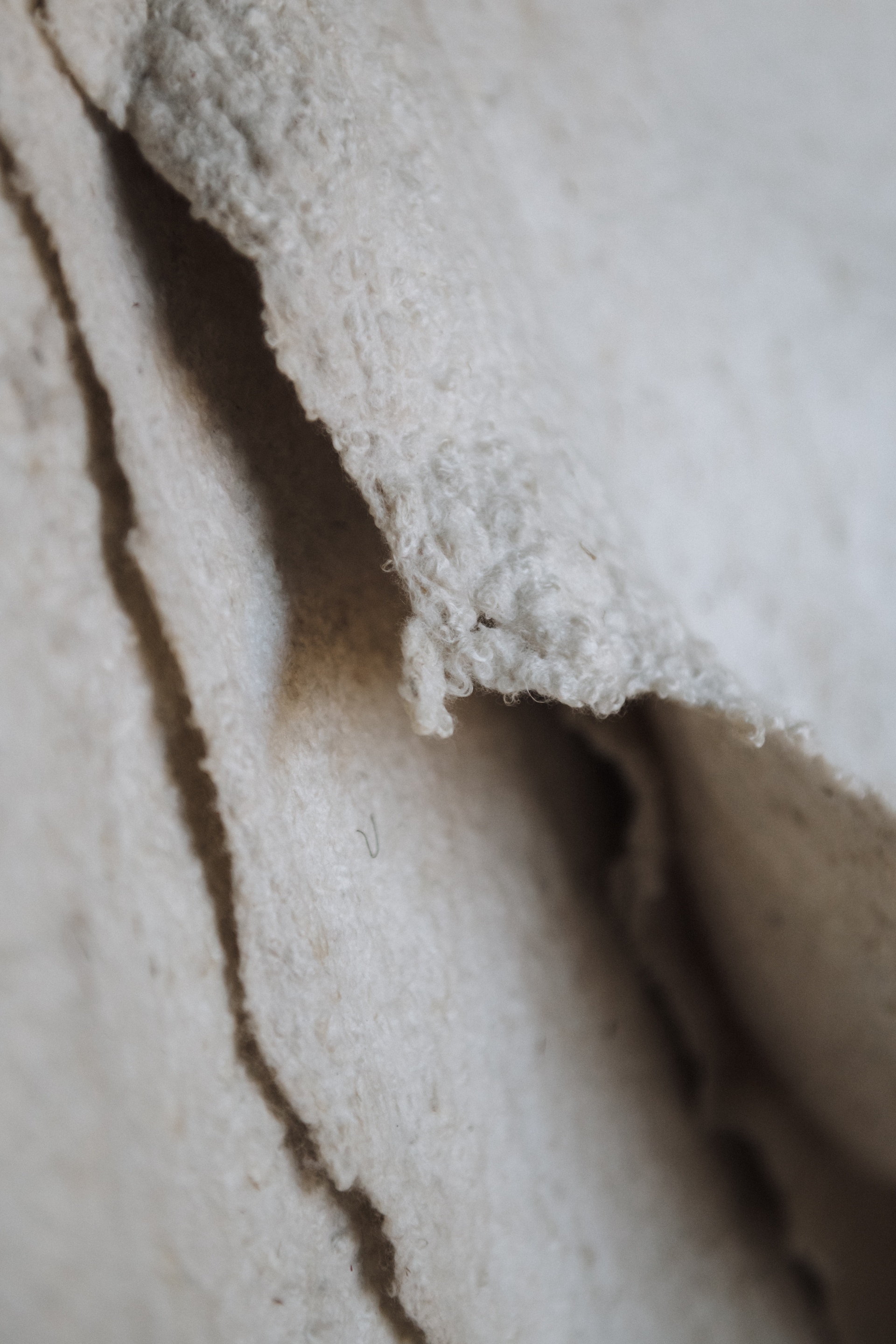
Tell us about your process.
I approach all products or projects the same way. I always start with a sketch pad, drawing doodles of what I think could be. Sometimes, I move the models into clay, and then from there, I'll do 3D modes on the computer for furniture and more structural work. I would say I draw inspiration from my surroundings, that being also nature and especially a massive part of it is my link to the farm and the closeness I feel with the landscape; that's why wool is such an influential part of my sculptural work and recently also in Jacobs Collection.
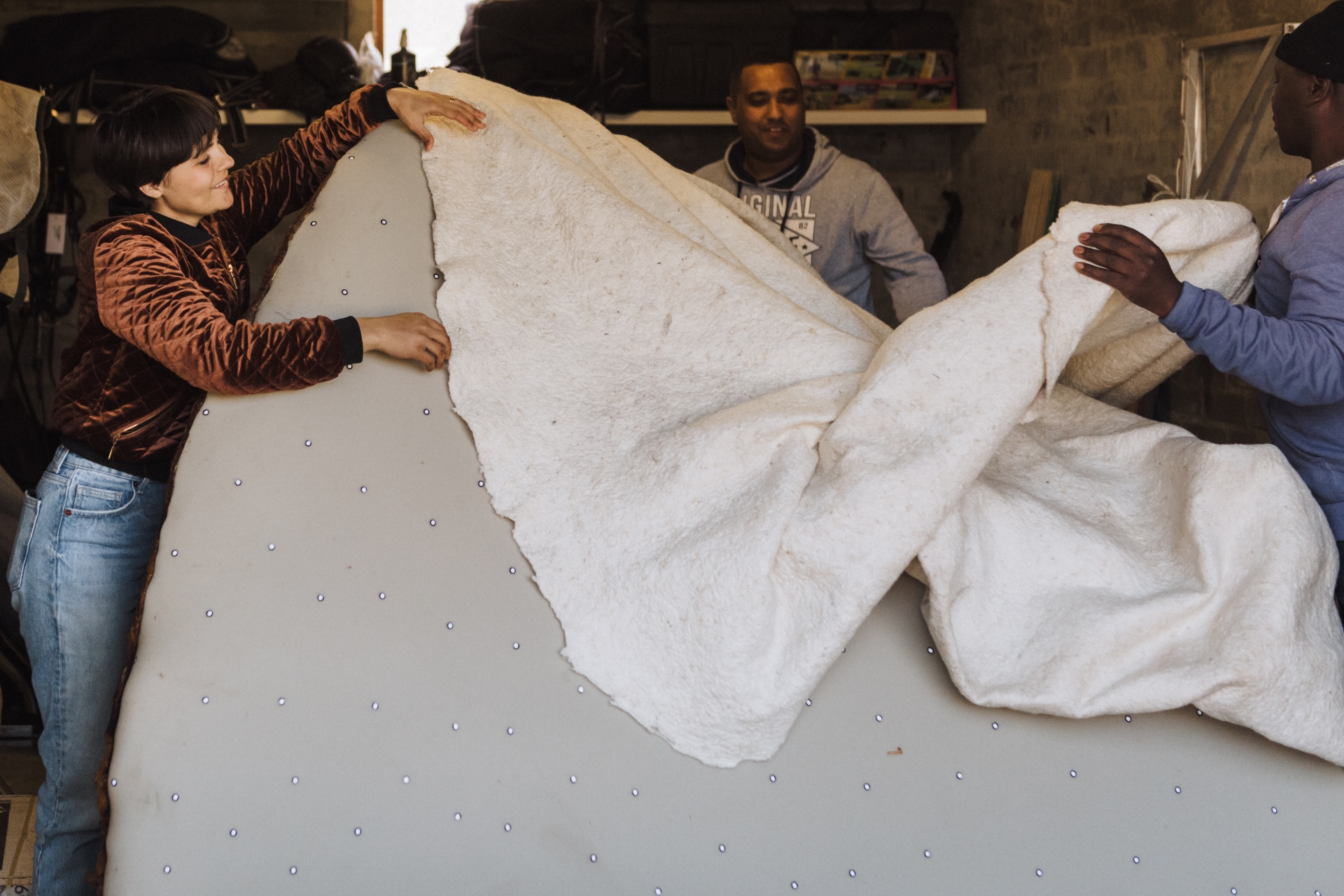
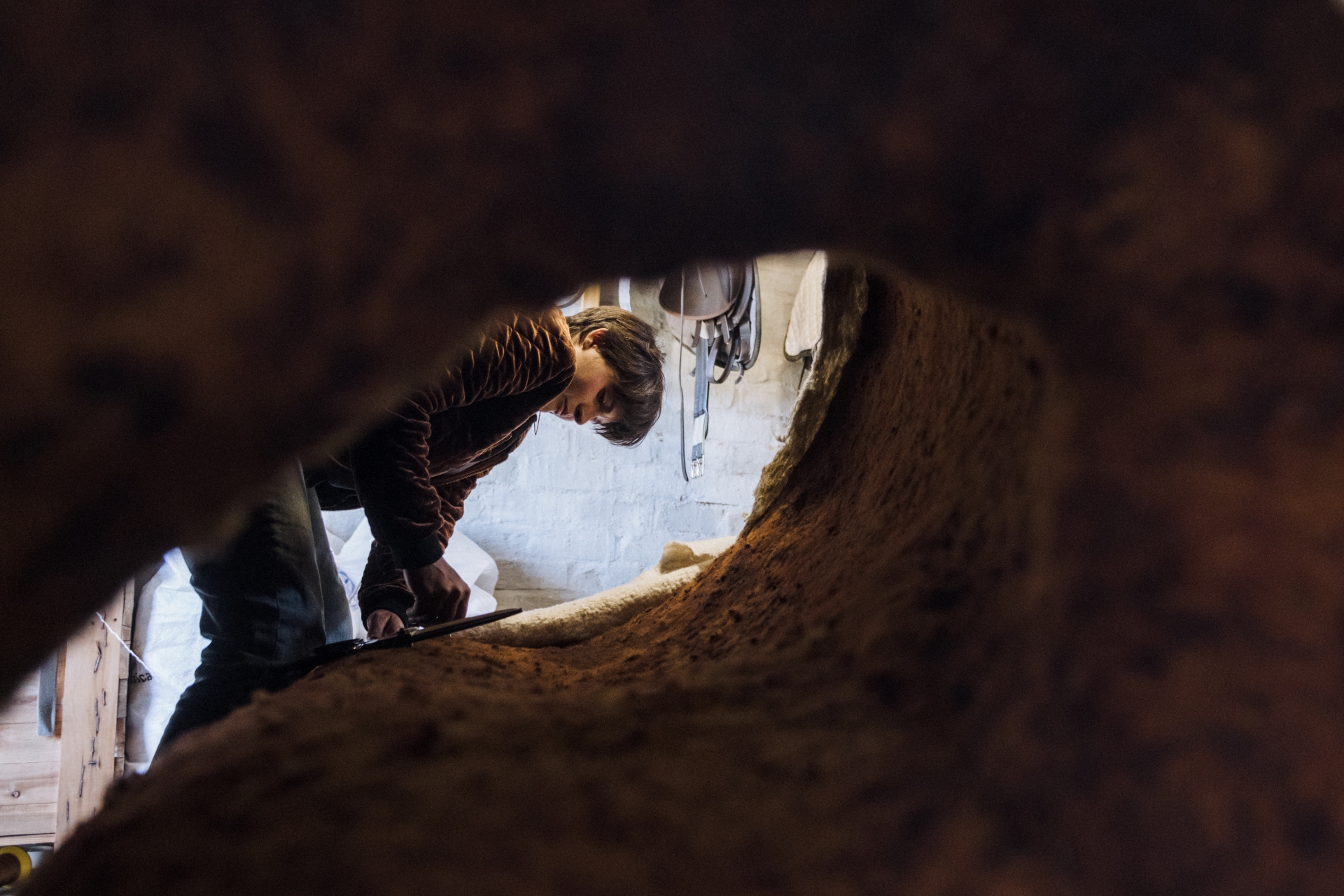
Who has inspired you in your career?
I am lucky to have many outstanding mentors in my career, and I include my amazing family and husband in this list. They deserve much credit for getting me to this point. My family and my heritage play an enormous part in who I am.
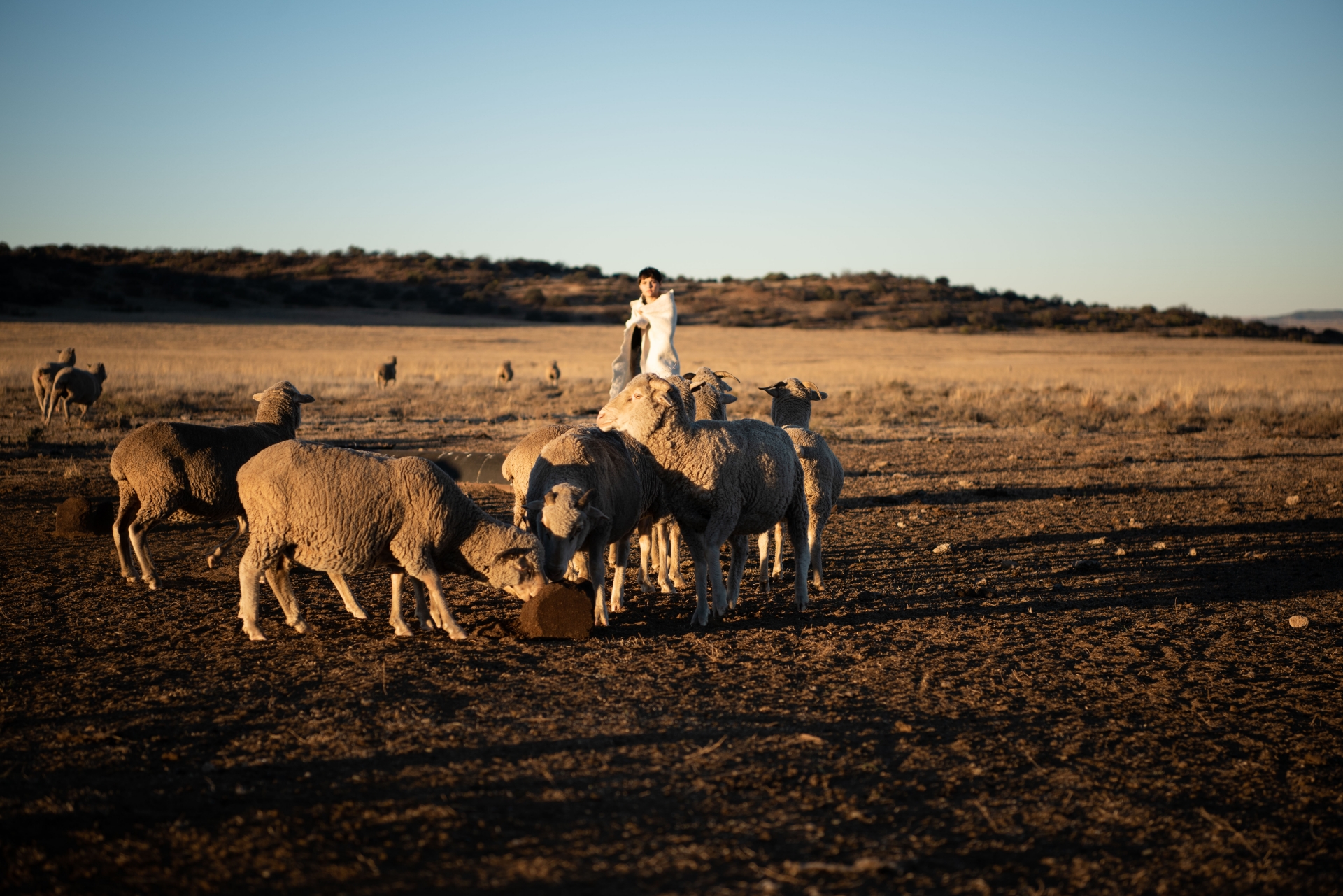
Ultimately, my art aims to bridge the gap between the tangible and the intangible, the seen and unseen, the real and the imagined. It visually explores the intricate interior psyche and the vast landscapes surrounding us. I strive to foster a deeper connection between the viewer and their emotional and environmental narratives by translating these inner landscapes into tactile and visually compelling forms.
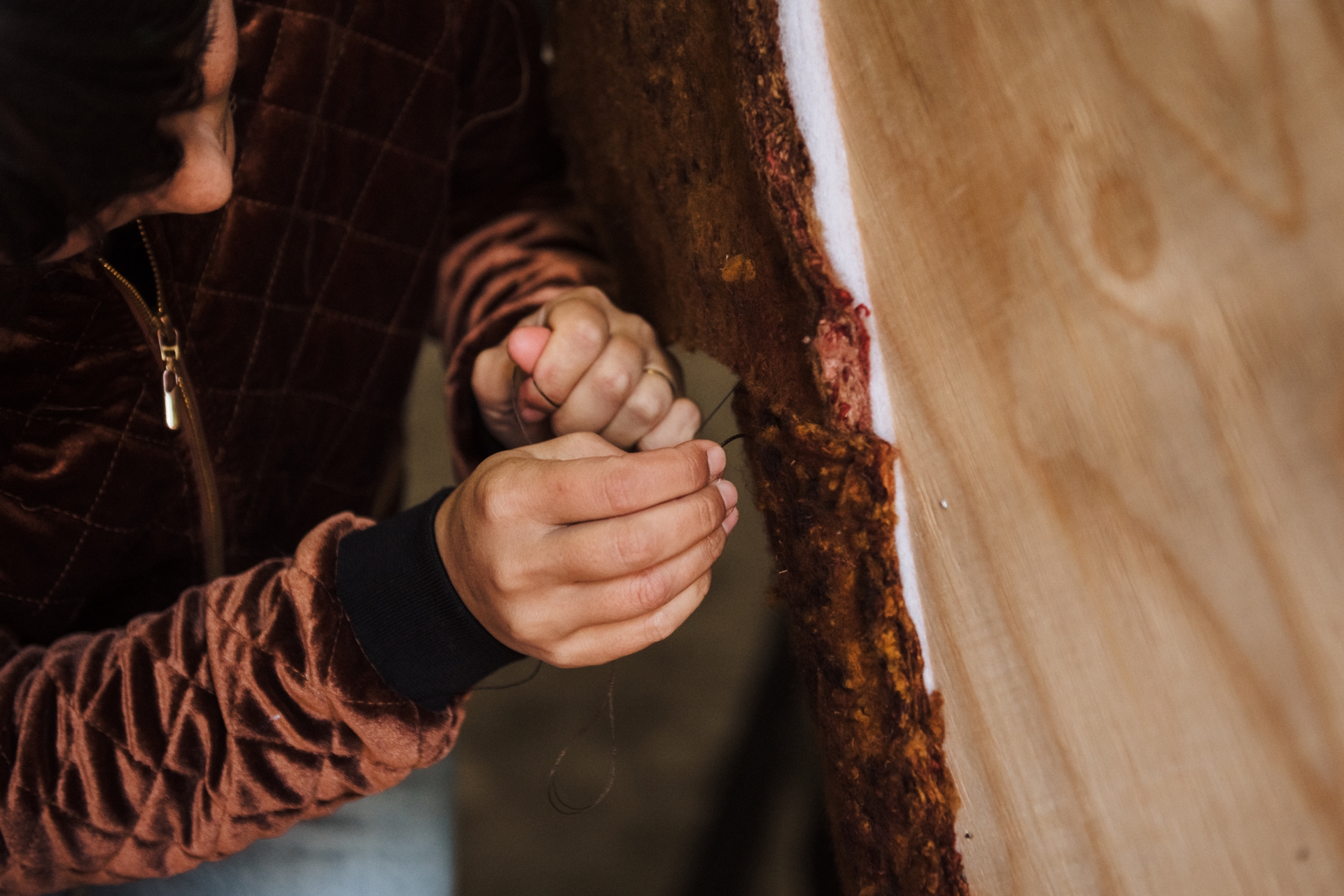
The pieces reflect on a time of uncertainty and, in response, offer comfort. Much like the embrace of a nurturer, this imaginary landscape cradles you and offers warmth to the visitor. The playful forms offer a childlike moment to distract you from the real to a fantastical world - a utopian ideal to create a sense of security and shelter. The sculptures provide a moment to tuck yourself into the hollows and immerse in the fantastical - providing a place to reflect and find solace.
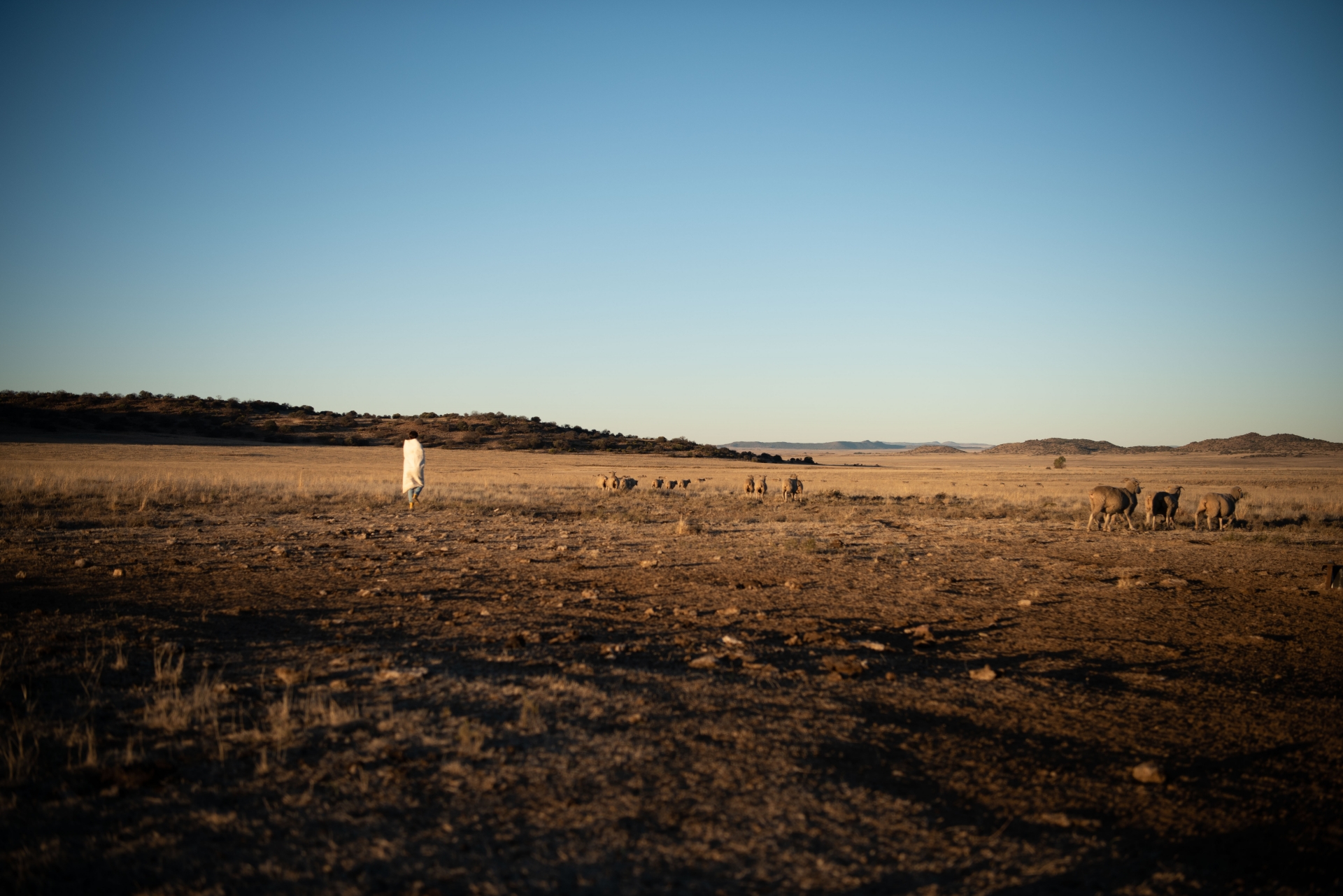
My drawings offer a glimpse into the world I imagined the place to be. The marks reference a broad spectrum from contours to vegetation. It also uses a gestural mark playing on the tensions viewed within this landscape. The organic vs. the constructed. And how they coexist in this world. The group Show Lines of Lineage included some of my drawings where the marks show the traces left on the landscape. Some seen and some unseen. Like in a drawing, our imprint on a landscape never leaves.
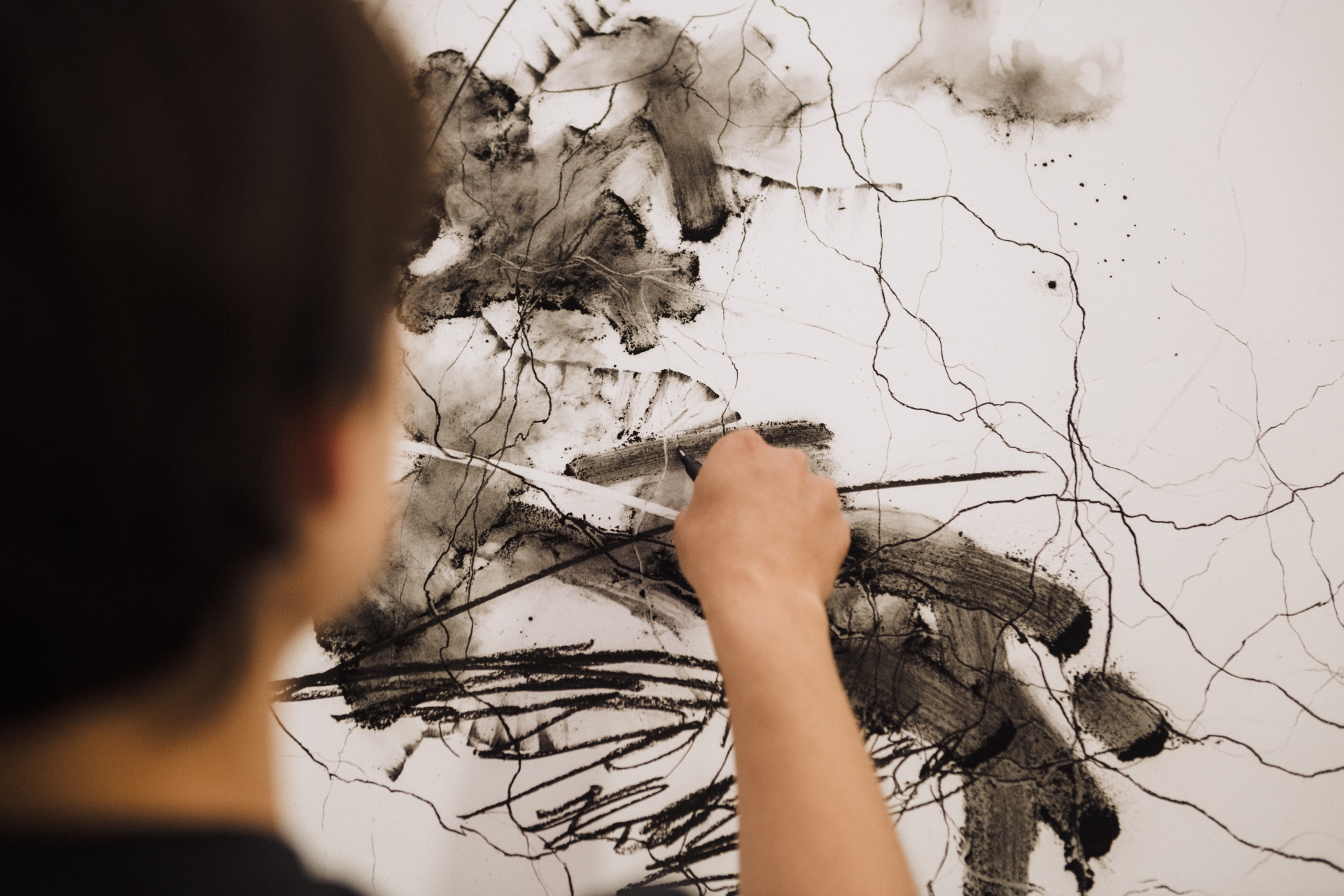
Where does the inspiration for your sculptural/functional pieces originate?
I always wanted to make something that allows interaction and functional use. My pieces also reference the play-like form I liken to the farm, how it cradles you, protects you and offers softness and comfort. My sculptural works involve the age-old process of felting, whereby the individual fibres of sheep's wool are matted by hand to create a remarkable fabric. To me, wool symbolises comfort, warmth and protection, evoking a sense of nostalgia and familiarity. I aim to evolve a sense of nostalgia, a soothing embrace of a nurturing mother offering her protection. Ultimately, my wool sculptures transcend mere objects and evolve into immersive experiences. I aim to honour this connection and celebrate my work's organic and constructed interplay. With its organic texture and malleability, wool felt becomes a symbolic conduit for exploring the depths of human emotions and the intricate layers of the subconscious. Each piece I create is a journey into the depths of my psyche, guided by introspection and the laborious desire to reconnect with one's homeland and heritage.
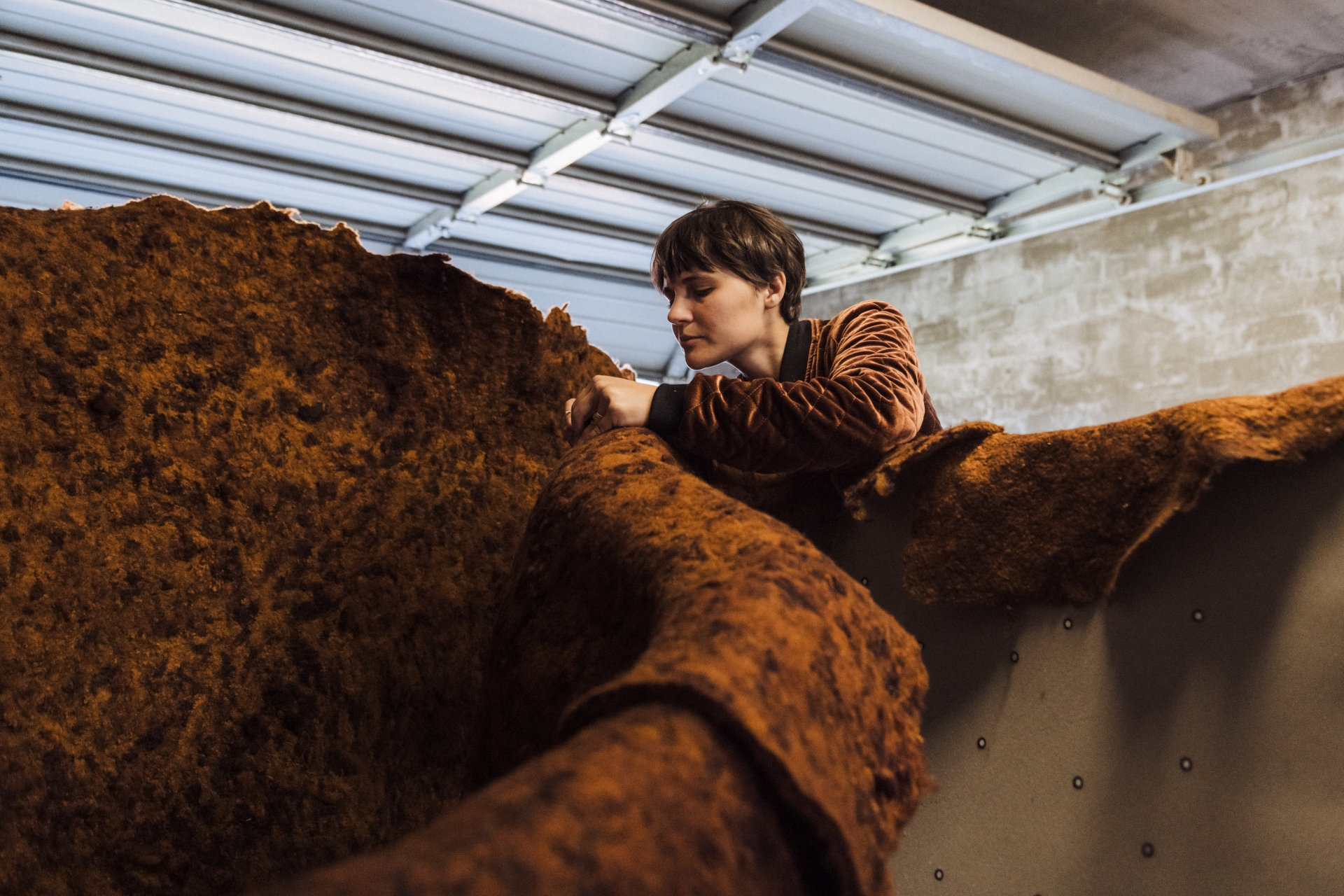
One can view the artwork as a single-draped cloth covering the landscape. Upon its removal, the rawness of transformation and fragility are exposed. Like a shed skin that reveals the passing of time and functions as an archive of evolution.
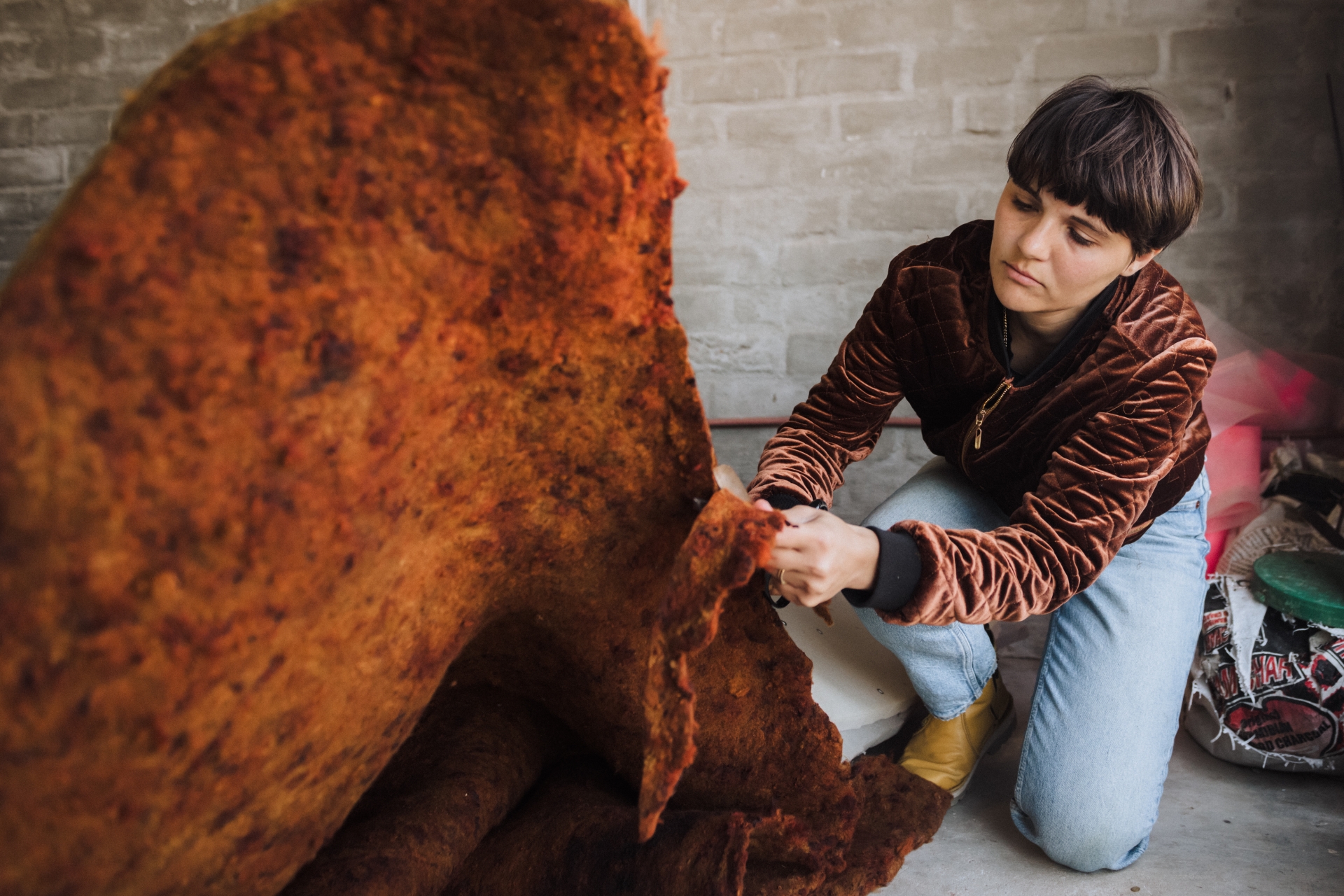
The felt represents an entanglement of the earth and its inhabitants that precedes its natural order. The artworks become the storytellers, preserving and sharing the narratives and histories embedded within the landscape. As viewers engage with my artworks in contact with the landscape, they become active participants in the narrative. The sculptures become catalysis for introspection and reflection, encouraging a deeper understanding of the relationships between landscape and artist.
More specifically, what was your inspiration for Feltscape?
Feltscape was born from my desire to push wool - a product I hold dear to my heart - further, to use the raw material and make something with it, and create a farm-to-seat concept, using the wool from my farm and processing it by hand to create the felted covering for Feltscape, a completely traceable product, while adding value to the raw material and creating a sustainable product. South Africa is one of the world's largest wool producers, yet only a little of the product is processed there. Producing locally helps artists, crafters and farmers and is a baby step in creating a sustainable product for a community. Sadly, in South Africa, most of the natural wool gets shipped out of the country in its raw state.
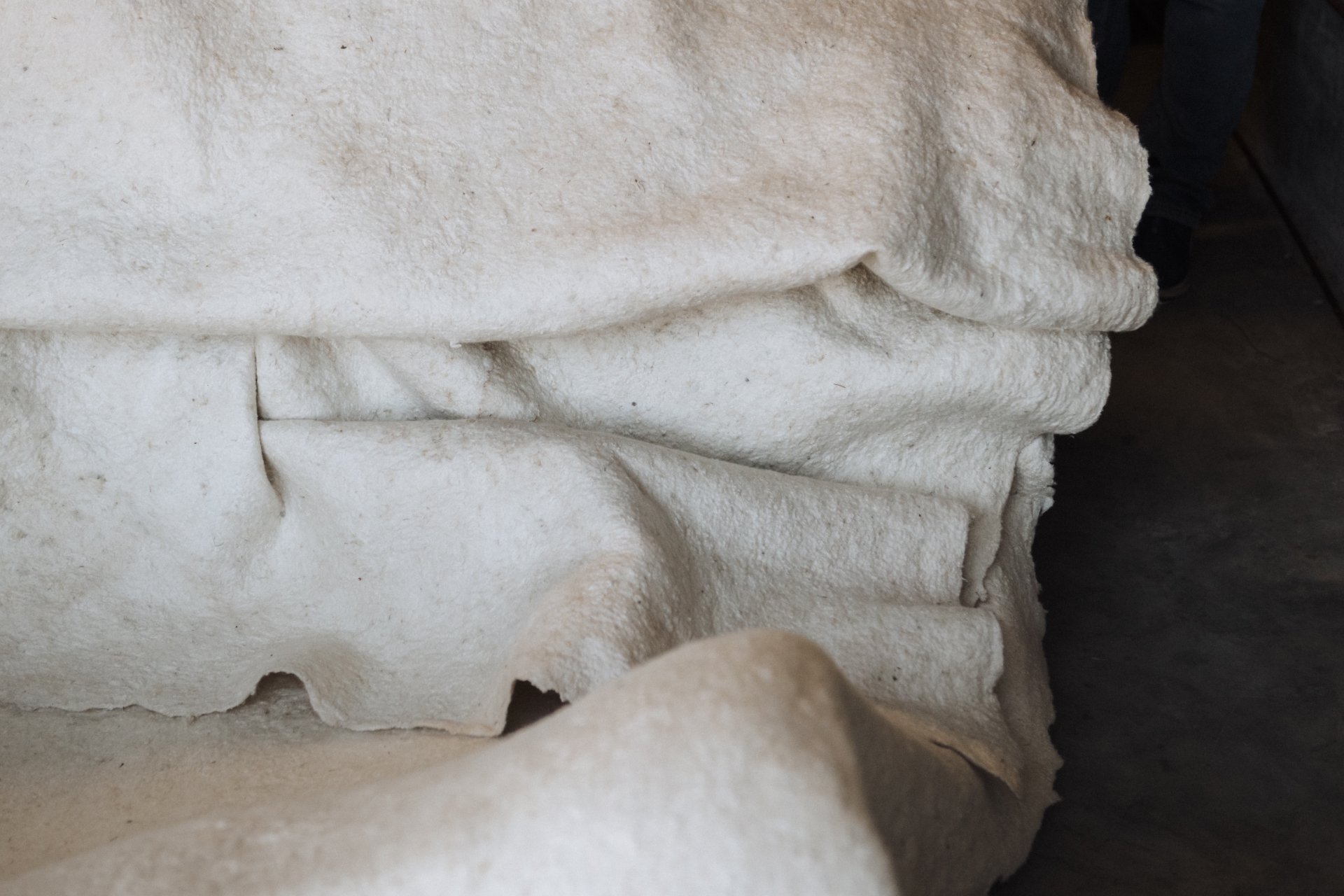
At the bottom of the structure, you can see almost a root-like system dangling down. Like myself, I have been removed from that landscape, but even though you are away from it, you still have a connection or a lingering connection to a childhood memory or narrative.
Was there a specific event that galvanised you to start working on the sculptures?
Enfold was a response to a treacherous fire that engulfed the farmland in 2021. The blazing flames turned the plains of grasslands to mere ash. The memory of a wasteland with only the red ochre anthills towering above all is still present. The sculptures embody the duality of transformation - the interplay between destruction and creation. The colours of ash and clay are prominent in the representation, revealing the underbelly of loss and destruction.
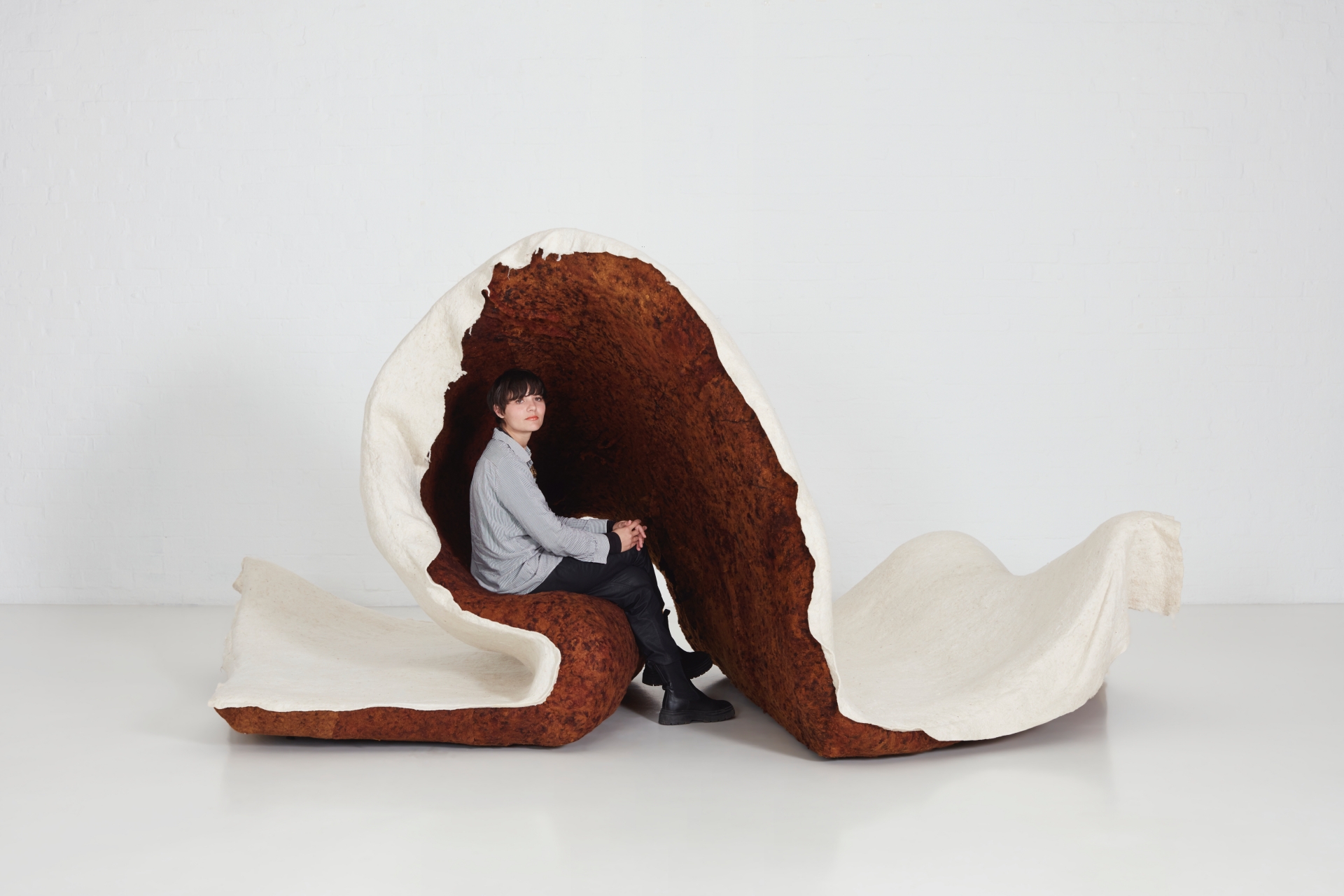

In contrast, the natural wool tops speak to healing and growth, a strength of overcoming. Wool fibres evolve from raw, tangled masses into a delicate chrysalis structure, shaped by external forces to adapt to the new form. The investigation of sourced material can be seen as an unveiling of the surface to expose the complexity of the relationship between an artist and a place of geographical significance.
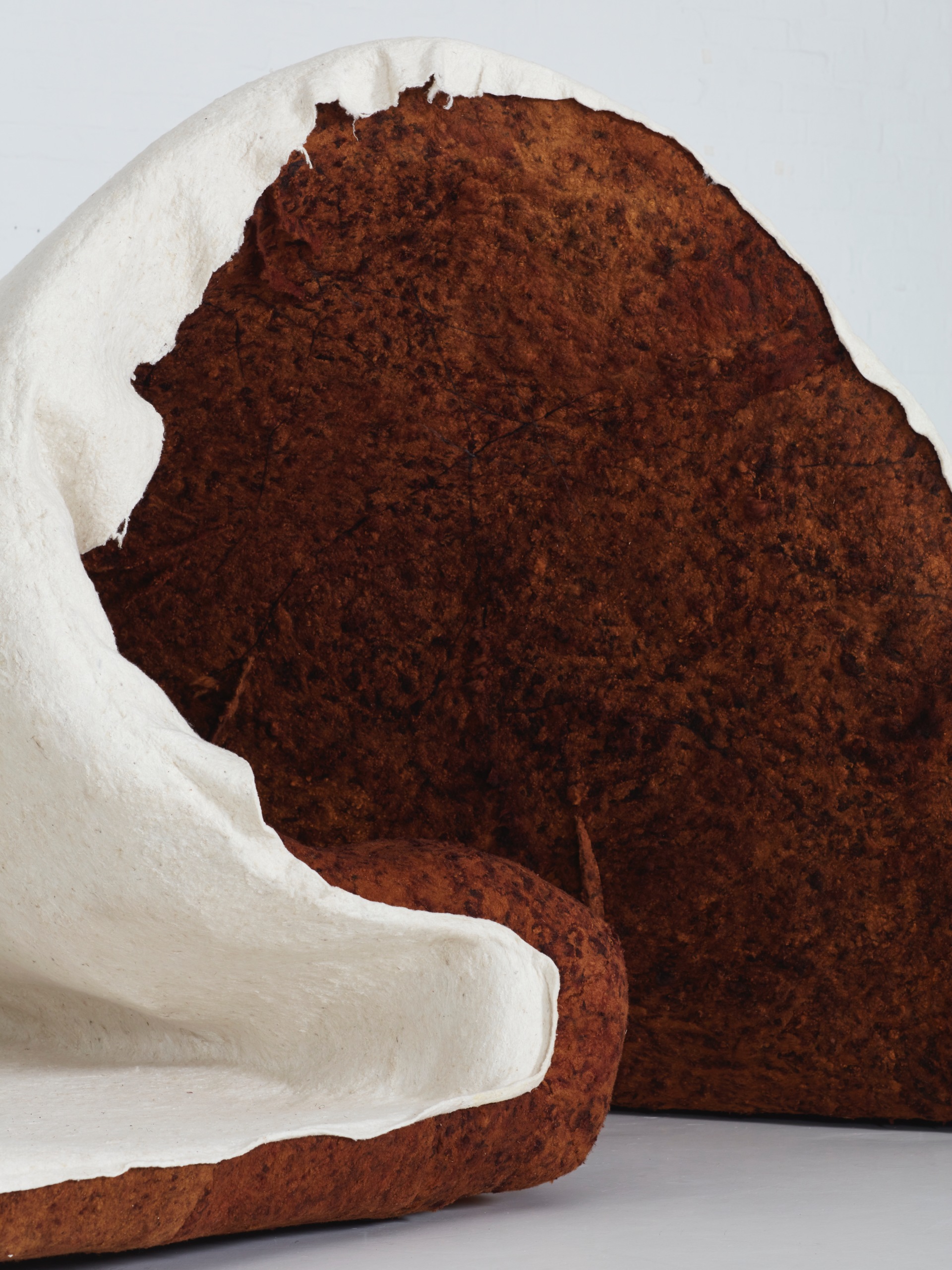
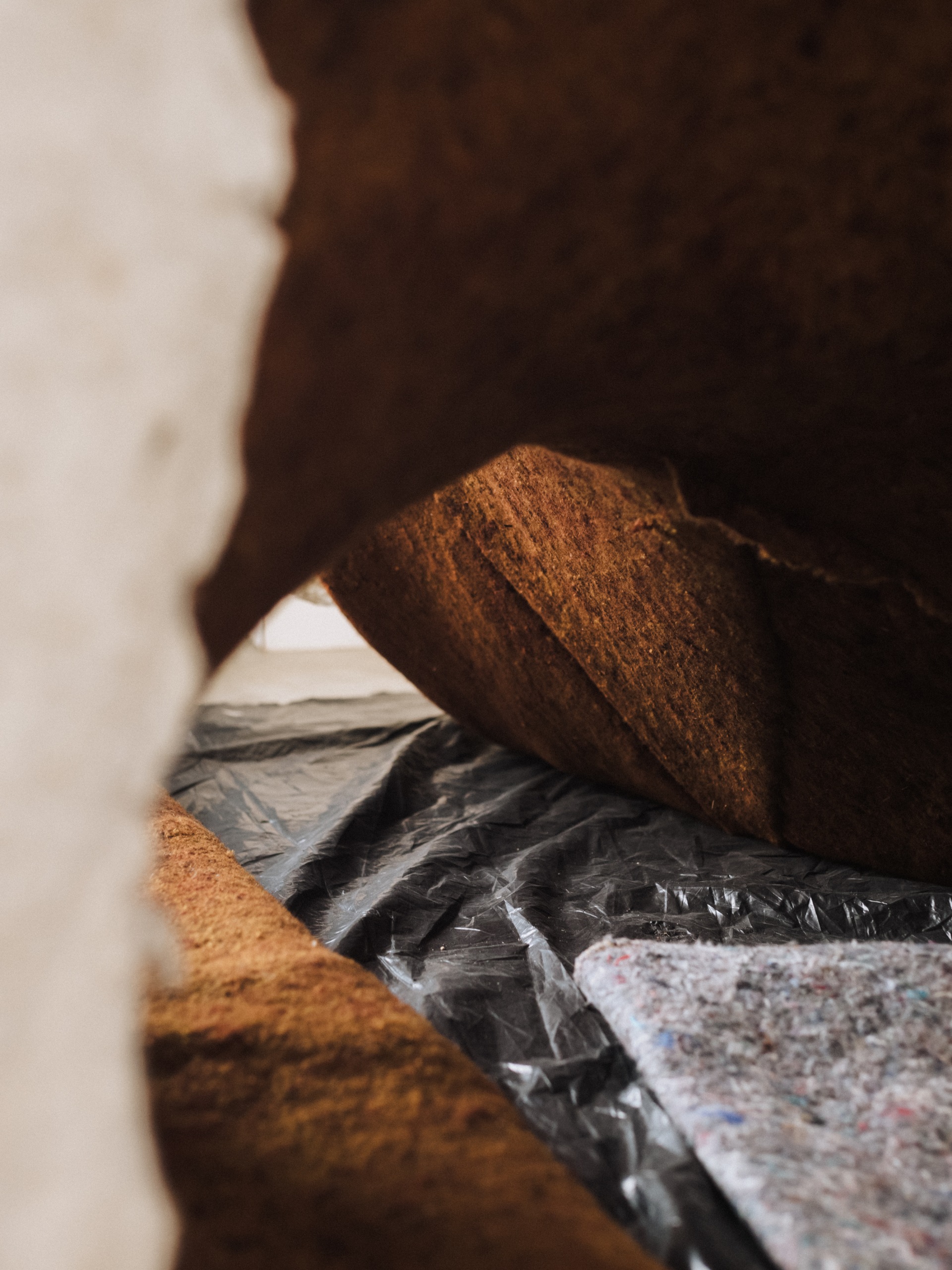
What was your inspiration for Enfold?
Feltscape created the platform for me to explore more, it provided the groundwork for Enfold, and Enfold will continue this idea.
What feelings do you wish to evoke with your sculptural pieces?
I invite people to connect with my sculptural works and feel the wool. I want my sculptural pieces to express to them what the landscape and heritage mean to me. It offers comfort, warmth and security and allows for moments of solace, much like a mother's embrace.
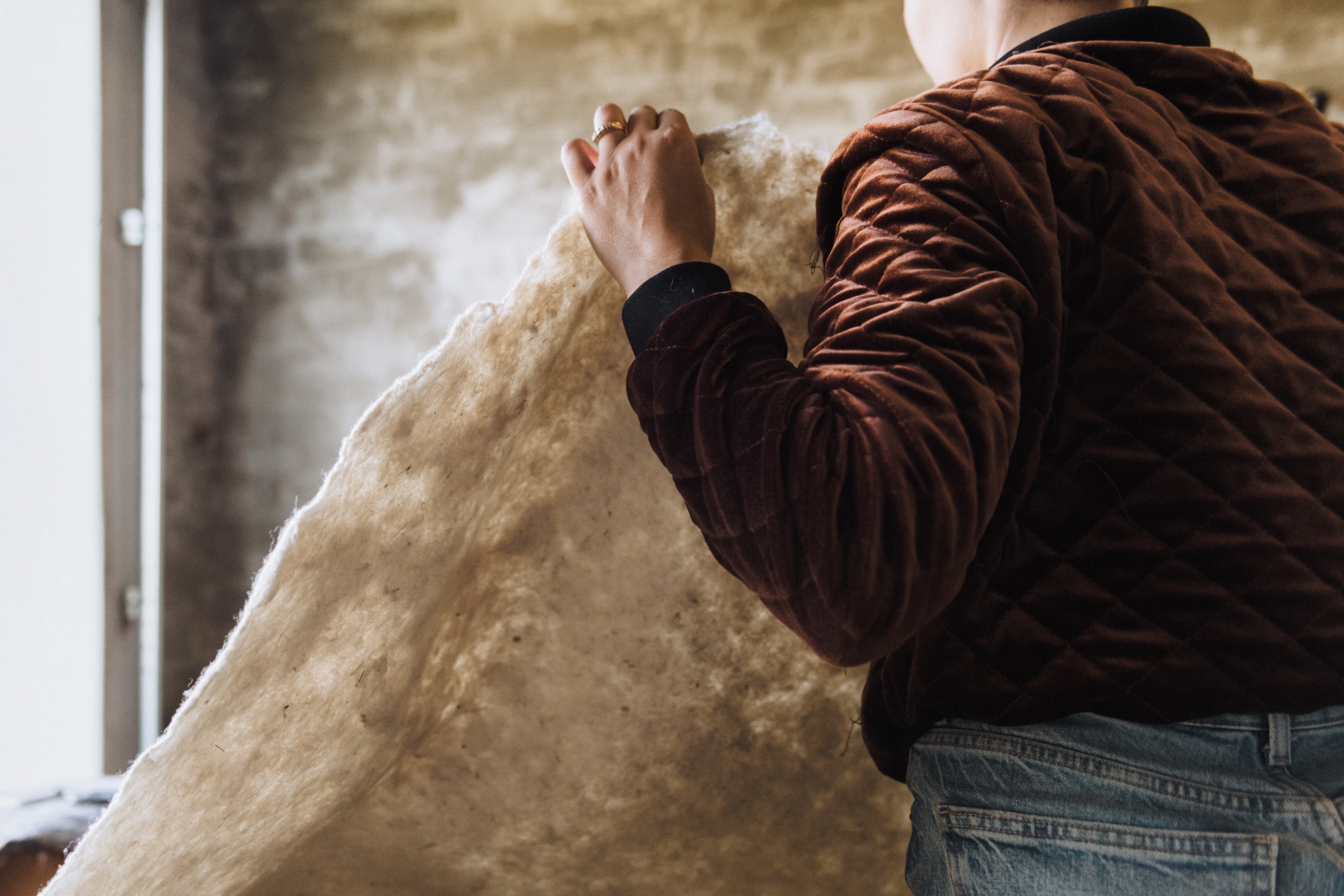
If you view landscape as an epidermis or a skin that, if you place it downwards, will collect traces, and even though you erase them out, you can still see the mark left there. And I feel like sometimes using the eraser and being harsher to the paper references that element of adding and removing, but it is still visible.
What is the most common feedback to your sculptural pieces?
The most common feedback on my sculptural pieces is that they are comfortable. I have always wanted to make something that allows interaction and functionality. Hence, my curiosity in functional design/furniture design.
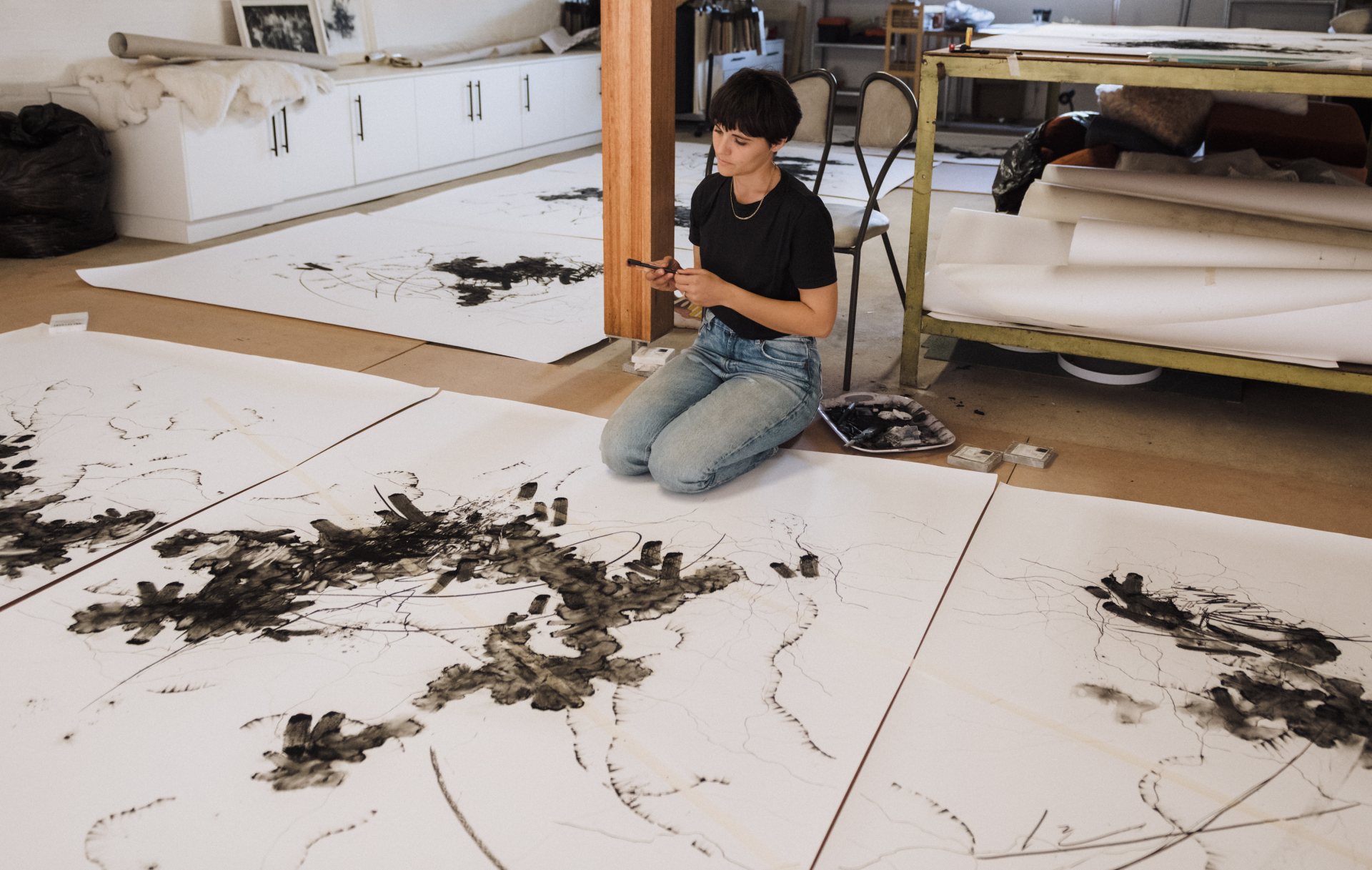
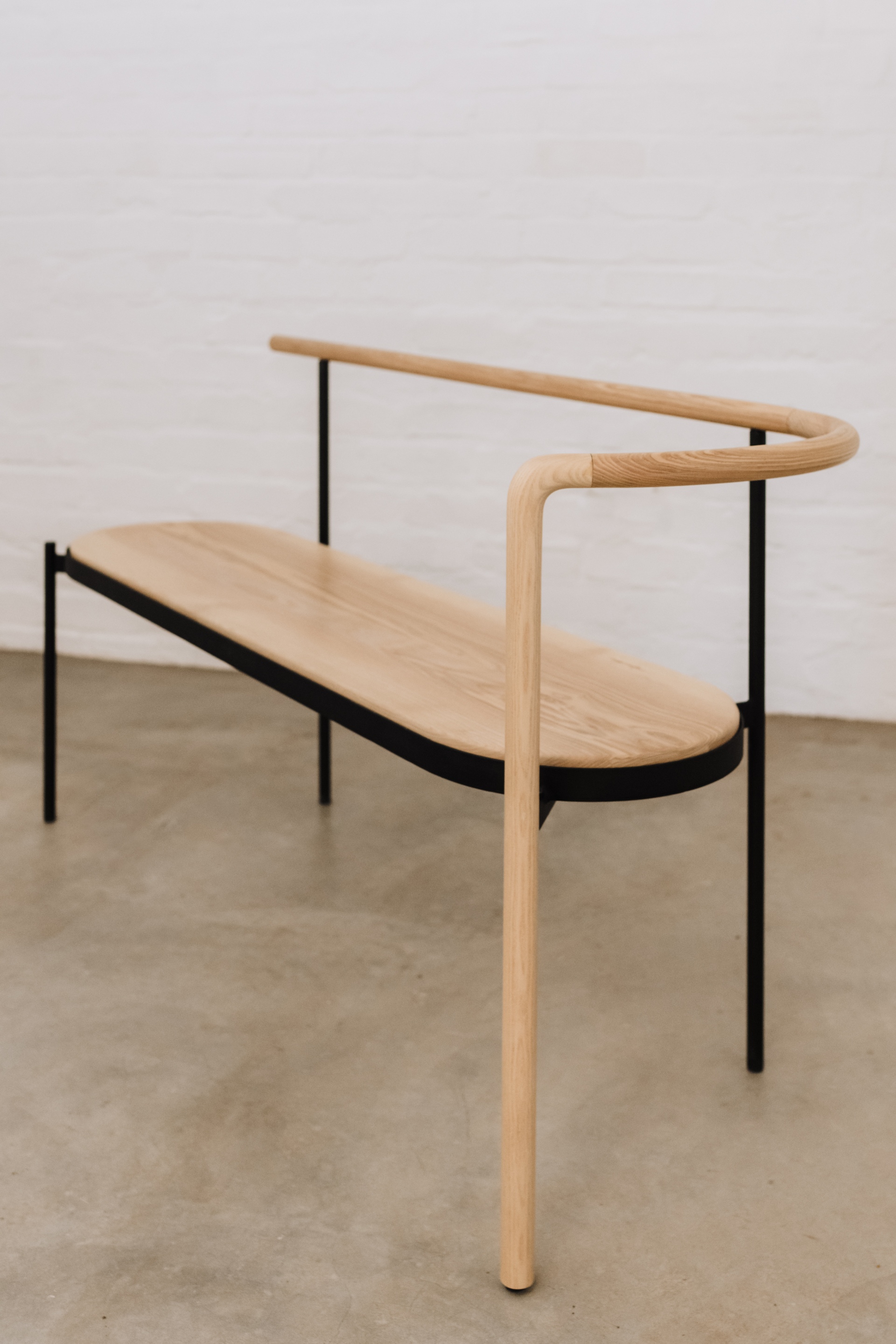

Christine Jacobs Solo Show “Enfold” at Southern Guild Gallery
Opening on October 26 and running till mid-November
Southern Guild, Silo 5, V&A Waterfront, Cape Town
(Click here to download the brochure of the show)





